|
Related FAQs: Worms, Featherdusters 1, Featherdusters 2, Tubeworms 3, Tubeworm ID 1, Featherduster ID 2, Featherduster ID 3, Featherduster ID 4, & Tubeworm Behavior, Tubeworm Compatibility, Tubeworm Selection, Tubeworm System, Tubeworm Feeding, Tubeworm Disease, Tubeworm Reproduction, Worm Identification, Polychaete Identification,
Worm IDs 1, Worm IDs 2, Worm
IDs 3, Worm IDs 4,
Worm IDs 5, Worm IDs 6, Worm
IDs 7, Worm IDs
8,
Related Articles: Polychaete Worms, Worm
Diversity, Nematodes:
Roundworms,
/A Diversity of Aquatic Life
Feather Dusters, Tube-Dwelling
Sedentariate Polychaete Worm Diversity, part III
Sedentariate Polychaetes part I,
part II, part
IV
To: Errantiate (i.e.
Non-tubiculous) Polychaetes (many known to hobbyists as
"Bristleworms"
|
|
|
By Bob Fenner
|
|
Family Serpulidae: Calcareous Tubeworms. Sometimes further
divided into worms with spiral tubes (Spirorbidae) and straight
(Serpulidae). Produce white, calcareous tubes, often with longitudinal
ridges, thickenings, spines. Shape, size of cover (operculum) often
useful in determining species. Includes genera: Serpula,
Spirobranchus, Protula
| Some Serpulids are tiny, down to barely noticeable
with the naked eye. Here are some calcium tube dwelling ones on a
relatively large Sea Squirt in N. Sulawesi. Smaller than pinhead
size. |
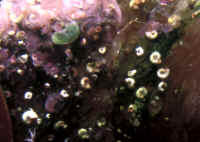 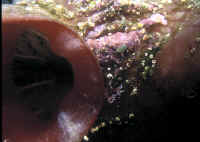
|
Genus Filograna:
| Filograna elatensis, Ben Eliahu & Dafni
1980. A Serpulid with distinctive reddish pinnate tentacles. Red
Sea to Indonesia, S. Japan, Australia and New Guinea. N.
Sulawesi. |
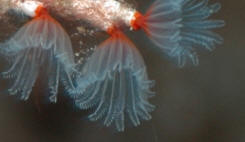 |
Bigger PIX:
The images in this table are
linked to large (desktop size) copies. Click on "framed"
images to go to the larger size. |
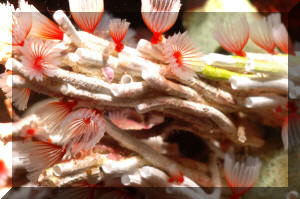
%20MD.JPG) |
| Filograna implexa,
Berkeley 1828. N. Sulawesi. Formed of irregular masses of white
calcareous tubes. Small heads/crowns of about a dozen simple
capitate tentacles. Often occurs in human-fouled settings. |
Genus Pomatostegus:
Bigger PIX:
The images in this table are linked
to large (desktop size) copies. Click on "framed" images
to go to the larger size. |
|
%20MD.JPG)
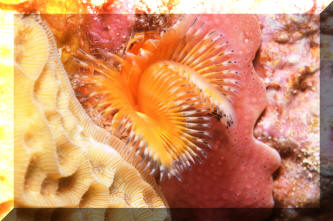
|
Genus Protula:
Bigger PIX:
The images in this table are linked to large (desktop size) copies.
Click on "framed" images to go to the larger size. |
.JPG)
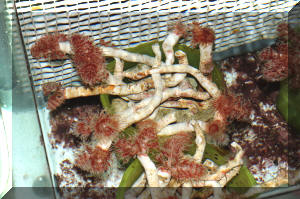
%20MD.JPG)
%20MD.JPG) |
Genus Spirobranchus:
Sedentariate Polychaetes part I,
part II, part
IV
|
|

